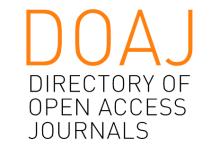Resource information
Real estate taxation has been intensely debated lately. The main issue concerns the formation of taxable values based on the current cadastral incomes. More specifically, the point is made against the iniquity that the current surveyed values generate in the fiscal system, thus the necessity of overcoming it.
It is known that the iniquity depends on the failed revision of valuation fees (related to the two-year period 1988-1989) and on the classification (sometimes still related to the urban cadastral) as well as on the modalities used to calculate the taxable basis through the multipliers (the IMU ones, particularly).
These are the expression of a conventional (and certainly distorting) rate of return procedure which have become tools for the income variation. During the last twenty years, the Government and the Parliament have found the solution to the problem of iniquity in the revision of the current cadastral incomes. Nevertheless, they never managed to start a veritable reform process. In fact, during these years, they have just managed to introduce temporary measures as for instance paragraph 335 e 336 of article 1 of Law 311 of December 30th
for the revision of the classification of some territorial backgrounds or of some real estate units, thus managing to control the most evident iniquities. Some other norms were approved in order to conduct remote surveys to identify properties which were never listed in the cadastre office. More than once, other possible suitable solutions have been discussed which could have been, with a fast implementation and low use of resources, a first step towards the recovery of an equity of real
estate taxation. Unfortunately, these came out to be temporary measures all the same. Last in order and worth of mention is the Ministry of Economic and Finance document by the Finance and Economy Department (hereinafter MEF) named “Ipotesi di revisione del prelievo sugli immobili” (Revision of real estate taxation proposal, August 2013) in which there is a list of all the different kind of interventions on real estate taxation, together with quantitative and qualitative valuations among which the use of the databases of the Observatory of real estate market to update the taxable basis of the Imposta municipale unica (IMU, Municipal one-tax). The solution eventually adopted by the Parliament is an overall revision capable of reforming the entire current cadastral valuation system without resorting to intermediate solutions. In fact, it has recently approved the Enabling Law 23, of 11th March, containing «Dispositions for a more equal, transparent and growth-oriented fiscal system» in which, in the article 2, a reform of the cadastral valuation system is taken into account. It is important to notice how any contrary vote has been expressed against the Enabling Law’s text while its first reading prior to the vote in the Chamber of Deputies on September 25th 2013, as well
as in the final vote which took place on February 27th 2014. Only during the first reading and vote in the Senate (February 4th 2014), 12 contrary votes were registered. These elements show how the awareness of the urgency to restore an equal real estate taxation system is largely spread and accepted. What emerges from the Parliamentary debate is that different political forces are fully aware of the necessity to restore an equal real estate taxation system as well as of the complexity of the reform and its long implementation process. The auspice is to have this system implemented as soon as possible, possibly before a five-year period. About this delicate issue, also the experts in the field and the scientific world of reference have participated in the debate about the necessity of a cadastral reform through several studies. On the one hand, they want to provide empirical proof of the taxation iniquity caused by the current system; on the other hand, they want to propose possible solutions to correct this situation.
Among these studies, there is the recent paper by Rocco Curto, Elena Fregonara, Patrizia Semeraro (2014) “Come rendere più eque le rendite catastali in attesa della revisione degli estimi?”( How can land registry values be made fairer pending a review of valuations?) in which a rapid and simple methodology to vary the current real estate rent through corrective coefficients of location is proposed. In this way, the taxable basis on real estate fees is re-defined in order to reduce the current fiscal iniquity caused by the obsolescence of the incomes based on the current cadastre office. However, a temporary correction to implement while waiting for the reform of the entire cadastral system. In particular, in their paper, Curto et al. (2014) propose to multiply the value of the current income by a coefficient obtained as a ratio between the average prices of a given census microzone and a reference index that “the ratio between an index price which most accurately sums up property values in individual municipalities or aggregations of municipalities in the case of the smallest municipalities (determined on the basis of market observations constituting the entire statistical sample) and the corresponding price indices of the values of each Microzone, defined on the basis of market observations (sub-samples)” (p. 62).
In the remainder of the paper, the methodology underlying the hypothesis contained in the MEF’s “Revision of real estate taxation proposal”(August 2013) is explained. Secondly, the methodological differences of corrections of real estate incomes proposed in the cited document by the MEF and in Curto et al. (2014)’s article are then compared. Subsequently, some empirical proof is supplied relating to the two taxable-basis equity recovery methods. Lastly, further consideration on the effective and
generalized implementation of the proposed methods will be made.




